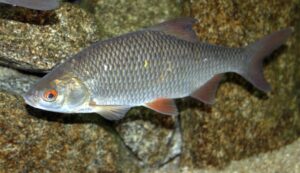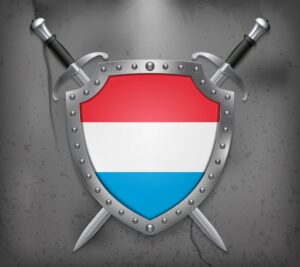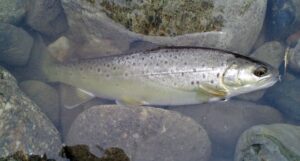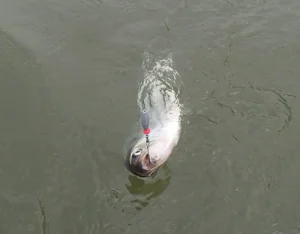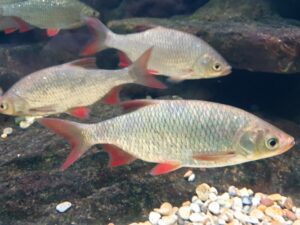Coarse fish: European Bitterling (Rhodeus amarus)
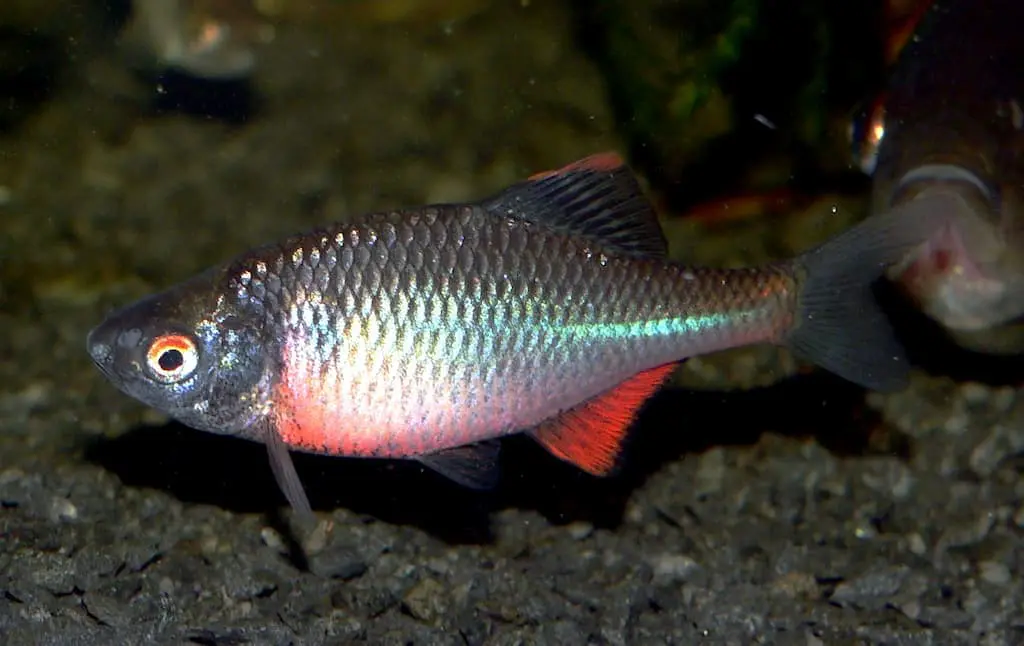
Are you keen on freshwater fishing and always looking for new species to catch? The European Bitterling, also known as Bouvière or Rhodeus amarus, can be a delightful addition to your fish list.
This blog post will guide you through understanding the physical features, habitat, behaviour and best techniques for fishing this vibrant creature. Intrigued? Let’s dive deeper into the fascinating world of Hooking Bitterlings!
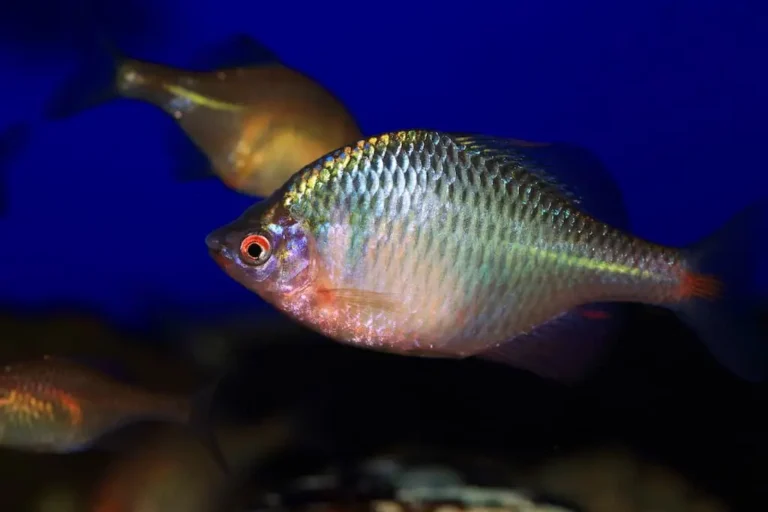
European Bitterling: An Overview
The European Bitterling, also known as Bouvière or Rhodeus amarus, is a small colorful fish that can be found in freshwater. This unique species has distinctive silver flanks and blue lines, making it a fascinating catch for anglers. In this guide, we will provide you with all the essential information on how to fish for European Bitterling and share tips to enhance your fishing experience. So let’s dive into the world of freshwater fishing and discover the wonders of the European Bitterling!
Physical characteristics
The European Bitterling displays a high, humpbacked body with silver flanks that glow blue during the mating season. Their head is small in comparison to their body and features large eyes giving them a unique look among panfishes.
Uniquely, apart from their relatively long caudal fin, other fins seem underdeveloped which contributes to their distinctive swimming style. The back of the fish presents a gray-green colour with metallic reflections while its sides exhibit light gray tones laced with silver glimmers.
Typically boasting sizes between 5 and 6 cm, some exceptional individuals reach up to 10 cm in length making quite an impression for such little creatures!
| Class |
| Actinopterygii |
| Order |
| Cypriniformes |
| Family |
| Cyprinidae |
| Genus |
| Rhodeus |
| Species |
| R. amarus |
| Binomial Name |
| Rhodeus amarus (Bloch, 1782) |
Habitat and distribution
The European Bitterling, also known as Bouvière or Rhodeus Amarus, thrives across Central and Eastern Europe and in some regions of Eastern Asia. You can often spot these panfish in slow-moving bodies of water such as lakes, rivers, and ponds.
They favour environments with sandy or slightly muddy bottoms that support their life cycle. Interestingly, the presence of freshwater mussels is a necessity for the survival of this species since they play an essential role in their reproduction process.
Lifespan and behavior
European Bitterlings, or Rhodeus amarus, typically have a lifespan of 2 to 3 years. During this relatively short time period, they display fascinatingly complex behaviour that revolves around their unique reproduction method.
Males undergo a dramatic colour change and stake out territorial claims surrounding freshwater mussel colonies when it’s time to reproduce.
The female European Bitterling plays her part by depositing approximately 40 eggs in the gills of these mussels. While this process may sound unusual for panfish species, it is absolutely crucial for the survival and continuation of both species involved.
It doesn’t stop there either; after fertilisation, the male releases his milt into the water which makes its way to the fertilise the eggs.
Upon completion of incubation within their mussel hosts, young fry make their grand entrance into freshwater environments. After hatching from their temporary homes inside mussels’ gills, these fry gradually venture out into open waters where they begin navigating life as independent European Bitterlings.
Fishing for European Bitterling: Techniques and Tips
To fish for European Bitterling, anglers should use lightweight fishing equipment and small hooks to mimic their natural prey.
Equipment and bait
Mastering your fishing gear is the first step to a successful freshwater fishing trip for European Bitterling. Anglers often prefer using light tackle for these petite panfish. The equipment used includes:
- A light action rod: Its sensitivity allows you to feel even the slightest nibble.
- Small hooks: Size 10 or 12 are preferred due to the small mouth of the European Bitterling.
- Fine line: A thin, transparent line of about 1-2 lbs test makes it difficult for this wary fish to detect.
- Bobbers: These come in handy when fishing in still water as they show when a fish bites.
- Waders: You might need these if you plan on wading into rivers, streams or ponds.
Best fishing locations
Anglers eager to catch European Bitterling should consider certain key locations that provide favourable conditions.
- Head for the slow – moving waters of Eastern Europe’s rivers. Here, the European Bitterling thrives, thanks to the sandy and slightly muddy bottoms.
- Explore freshwater habitats in Eastern Asia, home to a large population of this fish species.
- Pay a visit to quiet lakes or ponds scattered across Central Europe. These locations boast appropriate water conditions for these panfish.
- Look for bodies of water hosting freshwater mussels, indicative of a potential European Bitterling habitat due to their symbiotic relationship.
Fishing regulations and conservation
Fishing for European Bitterling requires a solid understanding of regulations and conservation efforts. Governments across Europe enforce specific rules to protect this species, due in part to its symbiotic relationship with freshwater mussels.
Conservation initiatives are crucial as the survival of the Bitterlings heavily relies on these mussels.
Compliance with fishing limitations is not just about following the law; it contributes directly towards maintaining robust populations of both the fish and mussels they depend upon.
Fishing sustainably ensures that future generations can also experience the thrill of catching a European Bitterling. Practices like catch-and-release and respecting protected areas support ongoing efforts to sustain healthy numbers.
Symbiotic Relationship with Freshwater Mussels
Freshwater mussels play a crucial role in the reproduction of European Bitterling, forming a fascinating symbiotic relationship. Want to discover more about this unique partnership between two aquatic species? Read on!
Importance of freshwater mussels
Freshwater mussels hold the key to survival for the European Bitterling. Serving as a lifeline, these mussels offer a unique habitat and food source that keep populations of this small fish thriving.
In an intricate dance of symbiosis, freshwater mussels play host to the eggs of the European Bitterling during reproduction, ensuring their safe development before hatching. Beyond just sustaining individual species like our beloved panfish, freshwater mussels contribute massively towards maintaining biodiversity within our water bodies.
Their silent work helps uphold ecosystems by filtering pollutants from water – solidifying their status as unsung heroes in nature’s grand scheme!
Reproduction and symbiosis
The European Bitterling has a unique reproductive process that relies on symbiotic relationship with freshwater mussels. During mating season, males change color and establish territories around mussel colonies.
Females deposit around 40 eggs in the gills of the mussel, where they are fertilized by the male’s milt. After incubation, the eggs hatch and the young fry gradually leave the mussel.
This special relationship highlights how crucial freshwater mussels are for the European Bitterling’s survival.
Common name for the European Bitterling (Rhodeus amarus)
Most popular common names for the European Bitterling are Bouvière (french), Bitterling (german) and Rózanka europejska (polish).
Conservation of European Bitterling
Protected by legislation, conservation efforts for the European Bitterling are crucial in preserving its unique habitat and ensuring its survival. Find out more about the initiatives in place to protect this fascinating fish species.
Protected status
The European Bitterling, also known as Rhodeus amarus, is a species that enjoys protected status. This means that it is safeguarded by regulations and conservation efforts to ensure its survival in the wild.
As a result of its protected status, fishing for the European Bitterling is not permitted or encouraged. Instead, anglers are encouraged to appreciate and value this unique fish for its ecological importance rather than targeting it for sport or consumption.
The conservation measures put in place help preserve the delicate balance between the European Bitterling and its freshwater mussel counterparts, which rely on each other for their survival.
Conservation efforts and initiatives
Conservation efforts are crucial to protect the European Bitterling and its habitat. The Bouvière is a protected species, and conservation initiatives focus on creating and maintaining suitable habitats for both the Bouvière and freshwater mussels.
European Bitterling are classified as “Least Concern” on the IUCN Red List. While this may suggest that they are not currently at risk, it is important to remember that their protection is still necessary to prevent future declines.
These efforts aim to ensure the survival of freshwater mussels, as they play a vital role in the reproduction and existence of the Bouvière. By protecting these habitats, we can help maintain healthy populations of this unique fish species for future generations of anglers to enjoy.
Conclusion
Mastering the art of freshwater fishing for European Bitterling can lead to a rewarding angling experience. By understanding their physical characteristics, habitat, and behavior, anglers can hone their techniques for a successful catch.
Remember to comply with fishing regulations and contribute to the conservation efforts aimed at protecting this unique species and its symbiotic relationship with freshwater mussels.
Grab your gear, find the best fishing spots, and get ready for an exciting adventure on the water!

